Pop quiz. Which should you be using more of for your online marketing: landscape video, or vertical video?
While there’s a time and place for both types of videos, we’ve found that even though vertical video is increasing in importance, fewer businesses are adopting it and adding it to their content mix. This is an enormous missed opportunity because the increase of mobile usage means that more users are prioritizing vertical video, and you should, too.
In this post, we’re going to take a look at exactly why vertical video is so important and how you can use it to improve your marketing campaigns.
Why You Need Vertical Video
The biggest reason that you need vertical video is simple: increased mobile usage means that this video format can be more impactful.
Users seeing a vertical video, for example, will experience a video that takes up their entire screens when they click to open it, instead of a small portion of the screen. Vertical on mobile is immediately immersive because of this, and it ensures that you’re actually having a user’s entire attention. This isn’t the case on desktop or non-full screen views, where there are a million distractions everywhere, designed to keep users engaged with the platform and not your content.
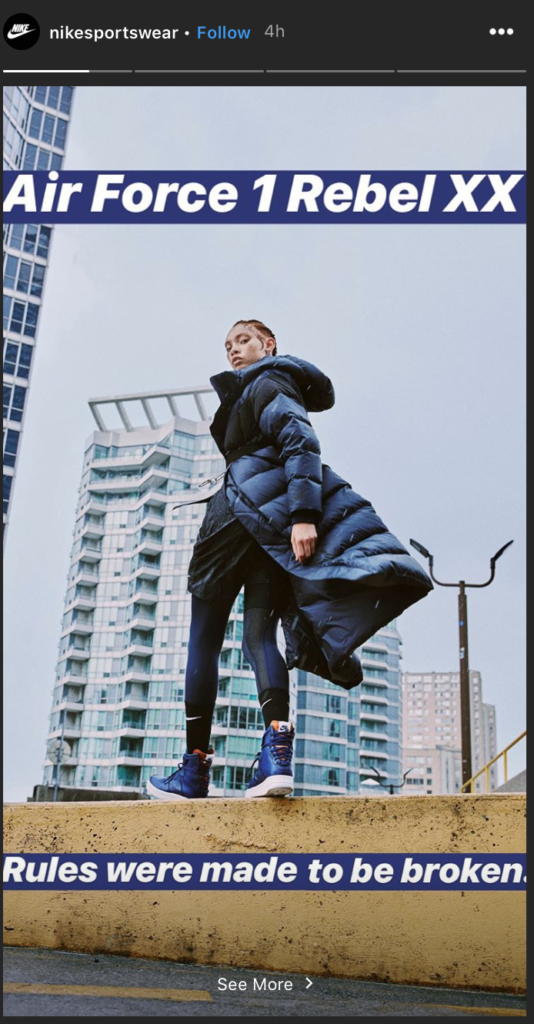
Is This True on Social Media?
We’re also seeing an emergence in prominence of vertical video features. The biggest example of this is Instagram Stories and Facebook Stories, both of which are huge players and generate massive amounts of engagement and views. At 400 million daily users of the feature, almost half of Instagram’s 1 billion+ followers are checking in to watch Stories daily.
Even YouTube Ads has embraced the vertical video, recently releasing vertical video ads designed specifically for mobile.
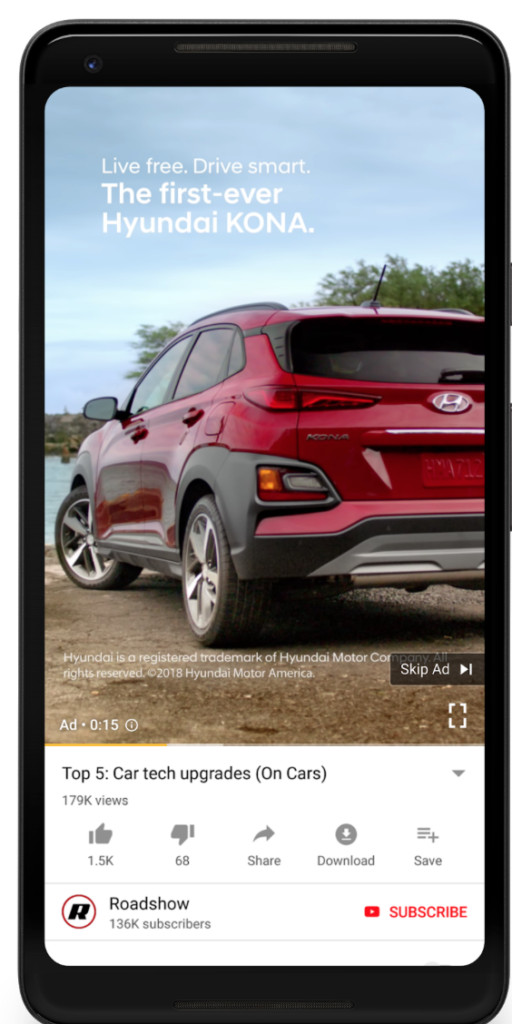
There’s also evidence that vertical video is increasing mobile viewing times. Facebook conducted a series of experiments to see which video formats will increase viewer retention rates, and they found that enlarging it to a near-fullscreen vertical video increased watch time more than any other ad format.
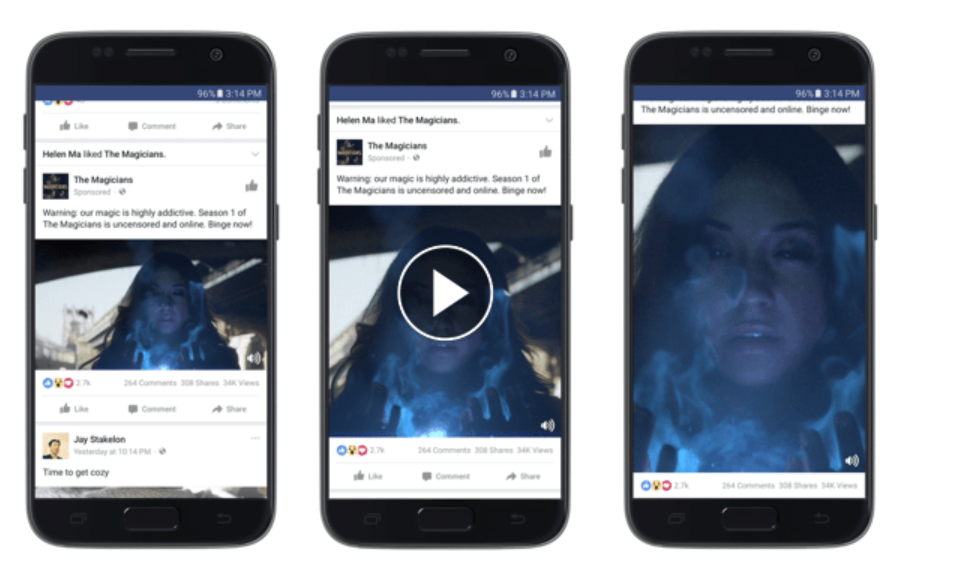
All of this makes sense. We’re watching more video than ever on our mobile devices, and since we hold our phones vertically 94% of the time, the comfort of seeing vertical video that takes up our entire screens without having to inconvenience us to turn our phones sideways is clearly powerful.
Vertical Video Best Practices
Video of the vertical variety is important. We’re all on the same page here.
Let’s move on to the good stuff: the best practices that will help you create vertical video that will make a big impact on your audience, and thus, your business.
Get the Dimensions Right
You wouldn’t believe how many vertical videos out there are edited to the point where they don’t have the right dimensions. As a result, the video sizing gets skewed and looks disproportionate, which is the last thing you want. Vertical gives you the entire screen; take up every millimeter of real estate that you can.
Dimensions for vertical video are going to be 9×16, and for many platforms, an excellent choice will be 1080×1920 for HD and 720×1280 for high-quality-but-smaller-file-size options.
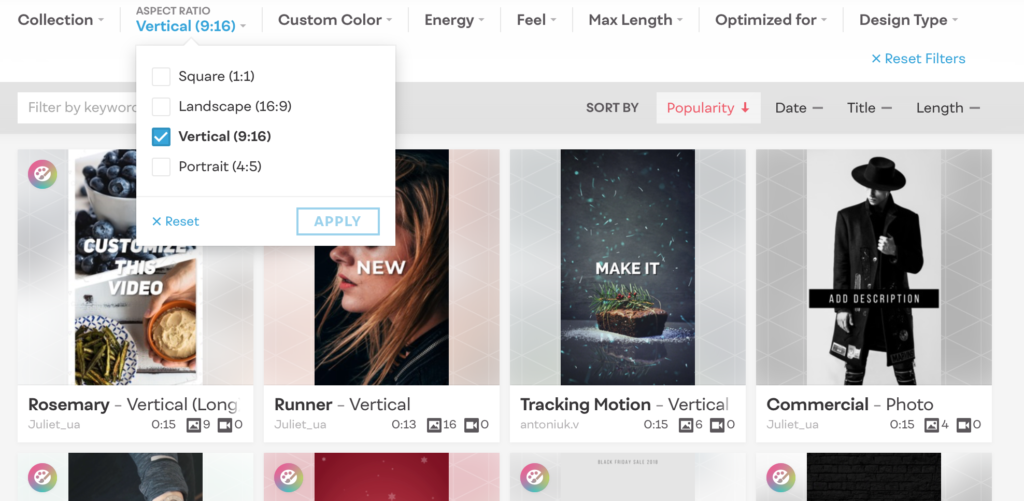
If you don’t feel like trying to get the pixels and dimensions exactly right on your own, Shakr can help. You can browse our entire video library (pictured above) to look at exclusively vertical templates.
Focus on Creating That Immersive Experience
Our mobile screens may be small, but the opportunity to really engage users with their full screen being dominated by your video is huge. Focus on immersive, engaging experiences that will keep your audience hooked.
This can include using dynamic features to make your videos a little more exciting. You can use poll or questions stickers to engage your audience on Instagram or add extensions and CTAs to your YouTube videos ads.
Sometimes, immersive will really mean just making the video as impactful as possible. Include great audio that aligns with the tone you’re going for, adding in closed captions, and using text effects to make the video look high quality.
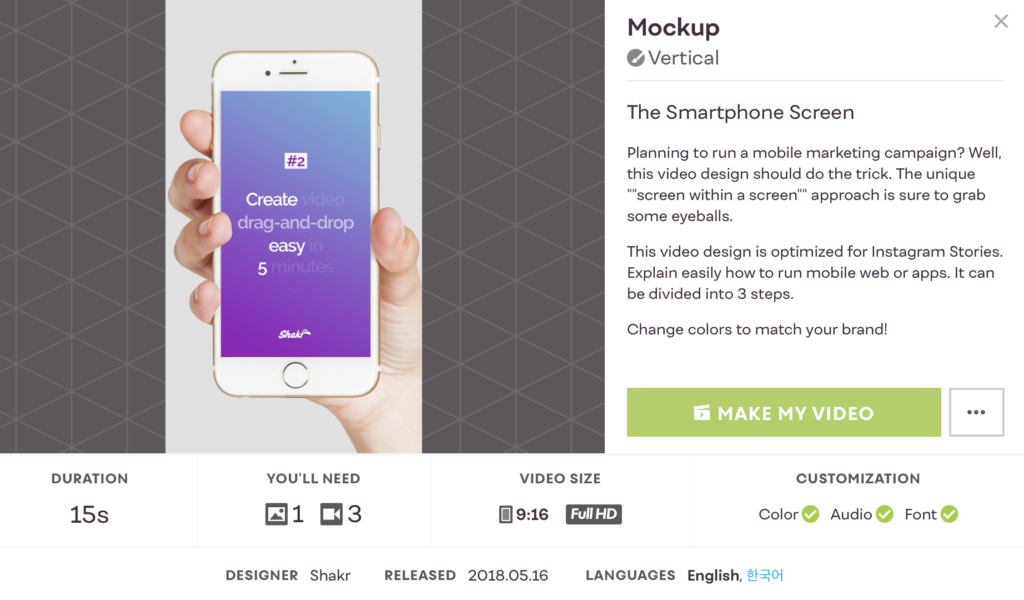
Again, Shakr can help here. You can use our customizable video templates to create the video of your dreams. Many of our templates come with audio enabled so that you can have theme music in the background without ever having to worry about copyright issues.
For best luck with immersive video content, remember to personalize each video for the platform it will be published on. YouTube Ads will have a very different type of video than Instagram Stories, which is more quirky and fun. If you’re interested in creating Story Ads for Instagram or Facebook, check out our StoriesAds creator tool to quickly create great content for your campaigns in just a few minutes.
Tell Amazing Stories
Vertical formats are best suited for mobile users, and mobile users are on the go, have limited data, and likely have that always-draining battery power. You need to grab their attention fast and hold onto it, or they’re going to get lost quickly.
We talk about storytelling a lot on this blog, and it’s because it’s the best thing you can possibly do with the majority of your video content.
Even informational content can use stories to suck people in and explain why they should care. Instead of just listing best practices to get a mortgage, for example, a broker could start the video with a story of someone who ended up losing their home because they picked the wrong type of loan. The stakes have been raised. Viewers care.



If you’re using Stories on Facebook or Instagram, you can still tell a lot of story in 15 seconds or less. Consider you combining 15-second chunks together to create a cohesive narrative, beginning to end. We talk about this more here.
Remember that storytelling evokes emotion, which makes viewers invested and makes them feel a personal stake in finding out what you say next. And even better, that emotional connection will help them remember you– and your message- for a long time to come.
Conclusion
Vertical isn’t just a trend or a fad that will fade away; it’s going to continue to be an important part of video marketing, social media marketing, and PPC advertising. Mobile usage is only continuing to increase, resulting in urgent importance to connect with mobile users on their terms.
Switch up your strategies to, at the very minimum, include vertical video into the mix. Trust us… it’s worth it.
Want a little assistance creating gorgeous, high-converting vertical videos? Check out our customizable vertical video templates here.

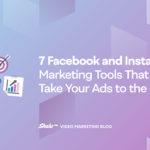

2 comments On Vertical Video 101: How You Should Be Using It
Pingback: Vertical Video 101: How You Should Be Using It | Local Business Hero ()
Pingback: Vertical Video 101: How You Should Be Using It - TRENDING STORY ()
Comments are closed.